British Columbia Itinerary – 7 days or 2 weeks
Last Updated on December 10, 2024
British Columbia is one of the most gorgeous places to visit in North America, with its towering mountains, flowing fjords, ancient forests, wine country and energetic cities. British Columbia is also massive, it can take several days to drive across it from north to south! Because of it’s size and geographic diversity, planning a trip can be a bit daunting. This article will help you prioritize and see as much as you can with either a 7 day or 2 week British Columbia Itinerary.
- Can I visit British Columbia without a car?
- When is the best time to travel to British Columbia?
- 7 day British Columbia itinerary without a car
- 2 week British Columbia Road trip itinerary
- What to do if you have more time
- What to pack for British Columbia
Can I visit British Columbia without a car?
Yes! However, it depends on what you want to do on your British Columbia itinerary.
Vancouver and Victoria are both very walkable and even if you have a car I recommend parking it and walking and making use of the fantastic public transportation. It will be a lot less frustrating!
Whistler is also easy to get to and around without a car. You can take a bus from Vancouver and then take the Whistler shuttle anywhere you want to go.
Rural areas of British Columbia are difficult to access without a car, so if you’re traveling car free I recommend sticking with Vancouver, Victoria and Whistler.
You can also take the train from Vancouver to the Canadian Rockies which has a stop in Kamloops in Interior BC. This is a gorgeous train ride although it is expensive.
When is the best time to travel to British Columbia?
British Columbia is a wonderful year round destination! Depending on what you want to do should determine the best time for your trip.
Summer is the busiest and most popular travel time. Most of British Columbia has long, sunny days, though it’s important to be prepared for rain any time of year, especially in Vancouver, Whistler and Vancouver Island. Expect crowds and lots of people out hiking, paddling and camping.
Fall is a beautiful time of year with less crowds, except in the Canadian Rockies where it’s very crowded through October. Expect freezing temperatures at night in the mountains and the interior. Coastal areas and cooler and rainier, but not as wet as winter.
Winter is a popular time to visit and travel British Columbia. The mountains have incredible skiing (both downhill and cross country) and there are lots of other winter sports to enjoy. Driving is much slower and involves winter driving conditions. Roads are well maintained but can be treacherous at times or closed during storms. Winter is wet and gray in Vancouver and Victoria, though it rarely snows.
Spring is another good way to avoid crowds and is a bit less wet than winter in coastal areas. Spring can still be VERY wet so be prepared. Ski season usually wraps up in late March or early April and high country areas continue to have deep snow through the spring. Keep this in mind if you’re a hiker, since spring is not ideal for mountains hikes in BC.
7 Day British Columbia Itinerary without a car
This 7 day itinerary is designed for those who don’t want to deal with getting a rental car or driving on their British Columbia Itinerary. This whole trip can be done without a car! If you do have a car, this still makes for a wonderful trip (except for parking in Vancouver and the expense of taking the ferry, which you could skip if you’re driving and stick with the mainland). This chart is a summary, the details are below. If you do drive this route, give yourself plenty of time for all the stops along the Sea to Sky Highway between Vancouver and Whistler.
| Day | Route | Highlights |
| 1 | Vancouver | Stanley Park |
| 2 | Vancouver | Chinatown, University of British Columbia Museum, Granville Island |
| 3 | Vancouver to Victoria | Ferry ride through the Salish Sea, Victoria Inner Harbor |
| 4 | Victoria | Government Street shopping, museums, afternoon tea, Butchart Gardens |
| 5 | Victoria to Whistler | Ferry ride, Sea to Sky highway, exploring Whistler |
| 6 | Whistler | Peak to Peak Gondola ride, hiking, biking or kayaking (summer), skiing or snowshoeing (winter) |
| 7 | Whistler to Vancouver | Sea to Sky Highway, exploring Vancouver |
Day 1 – Arrive in Vancouver
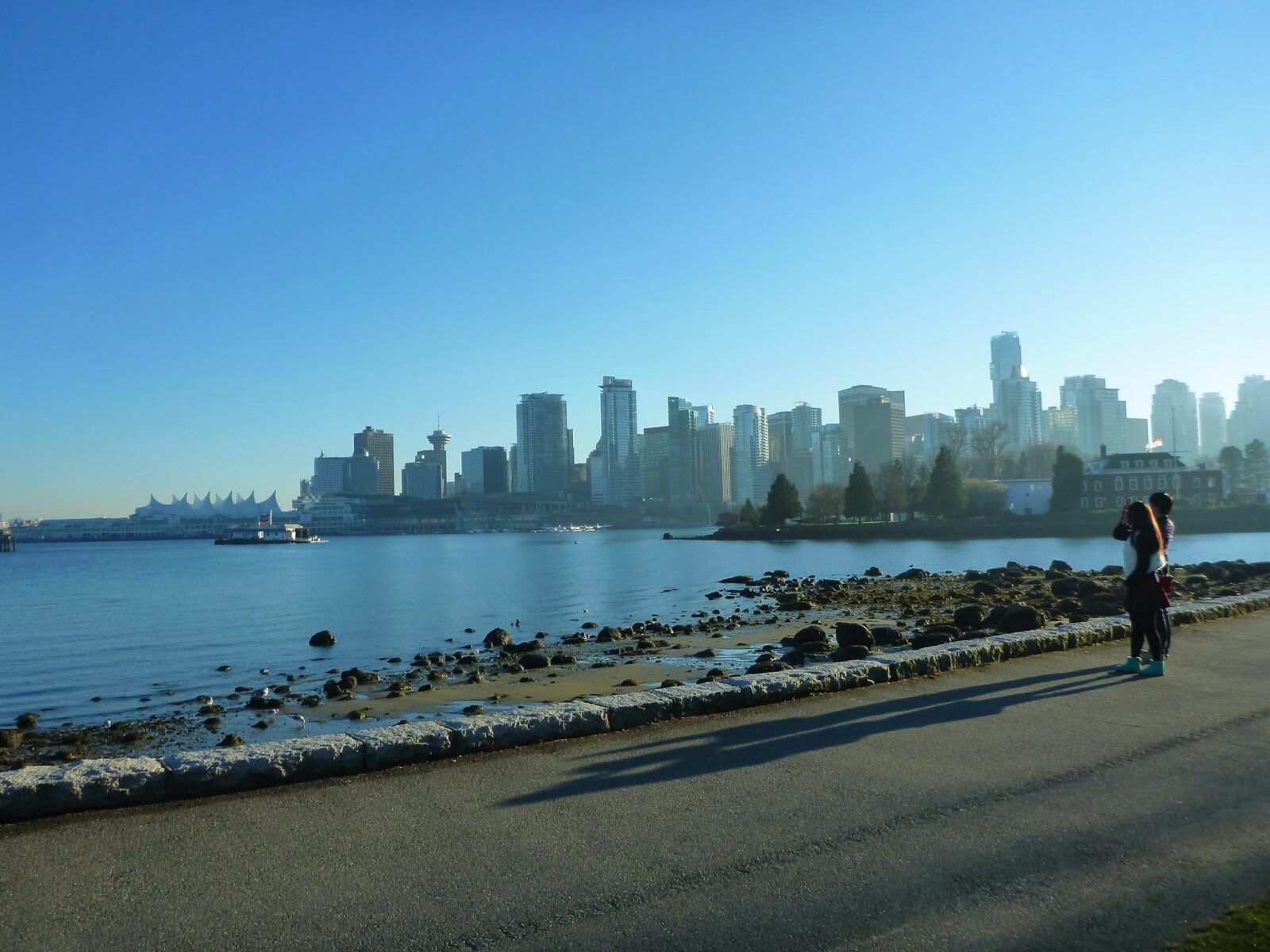
Arrive in Vancouver and stretch your legs after your journey in Stanley Park. Find a delicious dinner and catch the sunset before calling it a day. I recommend staying near Stanley Park or Canada Place for this short, car free visit to Vancouver.
Related: Best things to do in Vancouver
Day 2 – Exploring Vancouver
There are so many wonderful things to do in Vancouver! I recommend starting the day in Chinatown for Dim Sum, which is a meal eaten around brunch time and involves lots of small plates to enjoy and share.
After that, take the bus to the University of British Columbia campus and check out the wonderful Museum of Anthropology. The museum is an ideal place to learn about the First Nations people of what is today called British Columbia, both past and present.
Next, take the bus to Granville Island and explore the many shops, eateries and amazing food! Make sure to take the ferry around false creek. The ferry is not only fun, scenic and very Vancouver, but it can also quickly whisk you back to downtown.
Day 3 – Travel to Victoria on Vancouver Island (4 hours)
Today you’re heading to Victoria on Vancouver Island and British Columbia makes it really easy to do this car free! The ferry terminal is a ways outside of town (on both sides) but you can take a bus that takes you from downtown Vancouver to downtown Victoria without having to navigate lots of different busses on both sides (which is also an option, though it takes longer and is more complicated).
Head over here for all the scheduling and booking details for the bus and ferry trip to Victoria. The trip takes about 4 hours (including the very scenic ferry ride).
Depending on what time you arrive in Victoria, you will likely have time to wander around town and check out the inner harbor. For a longer walk with expansive views head out Dallas Road along the Strait of Juan de Fuca.
I recommend staying in Victoria’s inner harbor, which puts you in the middle of everything and is very walkable. It’s also easy access to transit.
Related: Best things to do in Victoria
Day 4 – Exploring Victoria
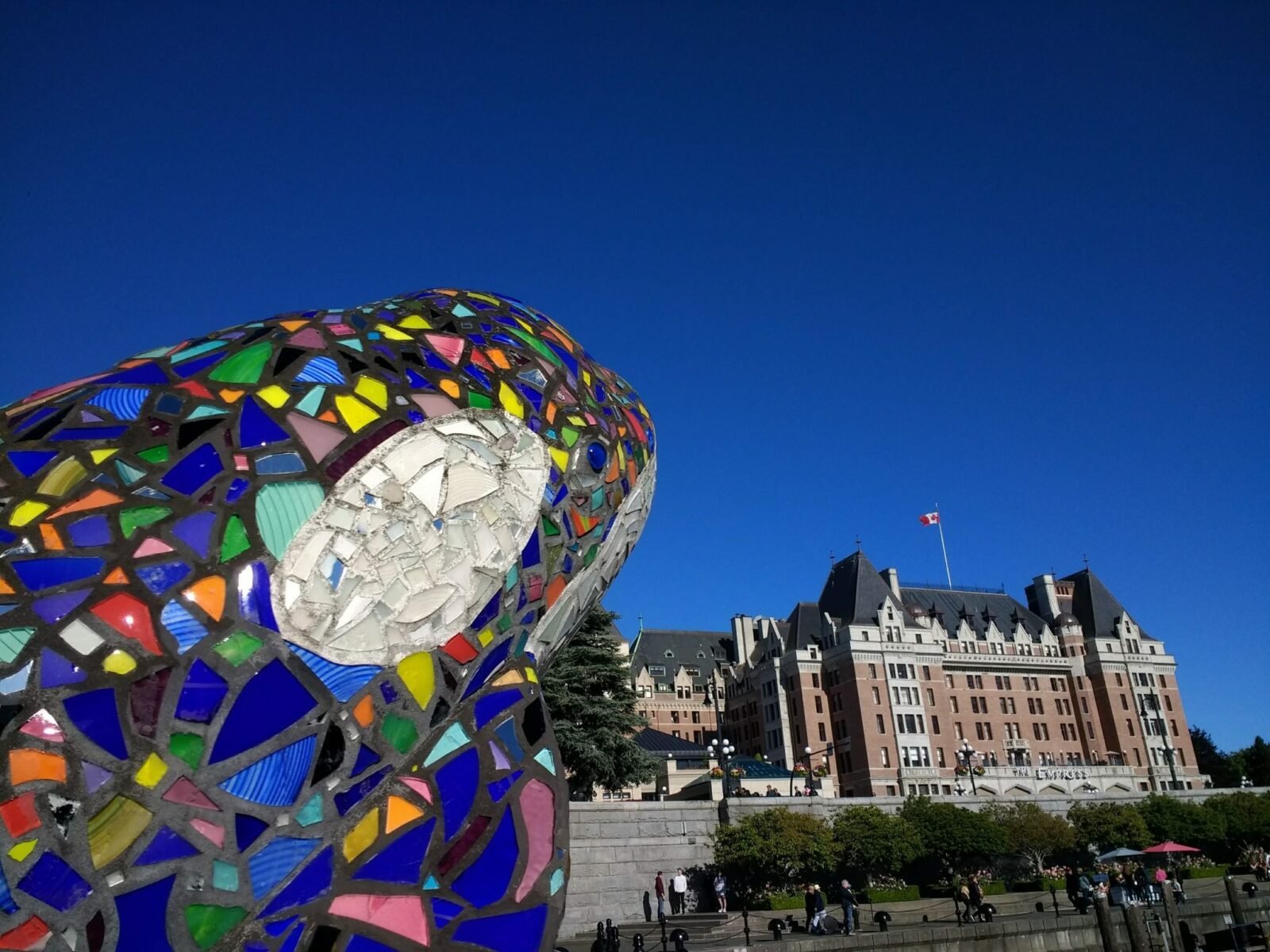
Today is your day to explore the delightful and charming town of Victoria, which is also the capital of British Columbia.
In the morning, walk around town and down the shopping area of Government Street and take in one of Victoria’s excellent museums. I recommend the Maritime Museum or the Royal BC Museum.
In the afternoon, you need to have afternoon tea! This is an institution for generations in Victoria. I recommend skipping the very tourist oriented (and overpriced) tea at the Empress Hotel and instead have tea at Butchart Gardens. In my opinion, this is the best afternoon tea in Victoria. This also gives you the chance to explore world famous Butchart Gardens, which is really beautiful all year.
To get out to Butchart Gardens, you can take the city bus from downtown and it takes about 45 minutes. There are also tour buses you can take to get there which are a bit more expensive but get you there a little faster.
In the evening, make sure to stroll by the British Columbia parliament buildings, which have really beautiful white lights at night all year round.
Day 5 – Travel to Whistler
Today you’re heading from the harbors of Victoria to the towering mountains of Whistler. First, you’ll take the ferry/bus combo back to downtown Vancouver and then take the bus to Whistler. Learn all about the bus service to Whistler here. You will need to take the bus or Sky train a short distance from Pacific Central Station to Burrard to catch your Whistler bus. Plan on the journey taking most of the day.
Not only are you seeing the amazing islands and mountains of the Salish Sea from the ferry on your return trip, you’ll also be traveling up one of Canada’s most beautiful roads on the way to Whistler.
I recommend staying in Whistler Village which is very walkable and you can also take the shuttle around the Whistler area.

Photo Credit: Destination British Columbia
Day 6 – Exploring Whistler
Today you get to explore the stunning mountain town of Whistler! Make sure to enjoy some of Whistler’s incredible restaurants, no matter what time of year it is.
I recommend riding the Peak 2 Peak Gondola, which you can ride year round. If it’s not a clear day, I would skip this since the view is what makes it really amazing. If you’re a hiker, don’t miss out on the amazing hiking options here.
Whistler is also a wonderful place to take a hike or a walk, there are lots of places to explore close by. Alta Lake has kayak rentals if you want to explore the water in summer and you can snowshoe around it in winter.
If it’s winter, Whistler is a great place to ski! If you’re not a skier, you can enjoy the snowy wonderland on snowshoes too.
Day 7 – Return to Vancouver
Today you’ll take the bus back to Vancouver, which takes about two hours. Depending on the schedule the day you’re traveling, you might have more time to explore Whistler before you depart or Vancouver when you arrive.
Spend the rest of the day doing anything else you missed at the beginning of your trip in Vancouver before heading home.
Ultimate British Columbia Road Trip Itinerary – 2 weeks
If you’re looking for an epic two week road trip adventure in British Columbia, here it is! You’ll want to park and take public transportation in Vancouver and Victoria, which are very walkable and have excellent transit. If you want to stay away from towns altogether, you can spend more time on the open road (driving around Vancouver Island instead of exploring Victoria for example). The chart provides a summary, with details below
| Day | Route | Highlights |
| 1 | Vancouver | Stanley Park |
| 2 | Vancouver | Chinatown, University of British Columbia Museum, Granville Island |
| 3 | Vancouver to Victoria | Ferry ride through the Salish Sea, Victoria Inner Harbor |
| 4 | Victoria | Government Street shopping, museums, afternoon tea, Butchart Gardens |
| 5 | Victoria to Tofino | Forests, waterfalls and beaches |
| 6 | Tofino to Whistler | Ferry ride, Sea to Sky highway, exploring Whistler |
| 7 | Whistler | Peak to Peak Gondola ride, hiking, biking or kayaking (summer), skiing or snowshoeing (winter) |
| 8 | Whistler to Kamloops | Sun soaked wine country, wide open landscapes |
| 9 | Kamloops to Radium Hot Springs | Giant Cedars Trail, Roger’s Pass, Radium Hot Springs |
| 10 | Canadian Rockies | Kootenay National Park – Marble Canyon, hiking, scenic driving |
| 11 | Canadian Rockies | Yoho National Park – Emerald Lake, waterfalls |
| 12 | Radium Hot Springs to Nelson | Kootenay Lake ferry ride, Ainsworth Hot Springs |
| 13 | Nelson to Osoyoos | Osoyoos Lake, wine tasting, produce stands |
| 14 | Osoyoos to Vancouver | EC Manning Provincial Park |
Day 1 – Arrive in Vancouver

Arrive in Vancouver and stretch your legs after your journey in Stanley Park. Find a delicious dinner and catch the sunset before calling it a day. I recommend staying near Stanley Park or Canada Place and leaving your car parked. It’s easy to get around Vancouver without driving! If you choose to drive, know that parking in many locations can be a challenge.
Related: Best things to do in Vancouver
Day 2 – Exploring Vancouver
There are so many wonderful things to do in Vancouver! I recommend starting the day in Chinatown for Dim Sum, which is a meal eaten around brunch time and involves lots of small plates to enjoy and share.
After that, take the bus (or drive) to the University of British Columbia campus and check out the wonderful Museum of Anthropology. The museum is an ideal place to learn about the First Nations people of what is today called British Columbia, both past and present.
Next, take the bus (or drive) to Granville Island and explore the many shops, eateries and amazing food! Make sure to take the ferry around false creek. The ferry is not only fun, scenic and very Vancouver, but it can also quickly whisk you back to downtown. Parking can be a challenge on weekends at Granville Island. Leave the car at your lodging if possible.
Day 3 – Travel to Victoria on Vancouver Island (3 hours – not including ferry wait)
Today you’ll get up and drive to the Tsawwassen ferry terminal. While not technically required, I highly recommend getting a reservation for the ferry in advance if you’re bringing a car (schedules and booking here). It could take up to an hour to get there depending on traffic. Make sure to arrive 30-60 minutes before your ferry is scheduled to sail.
The ferry ride is just over an hour and a half, with beautiful views of the mountains and islands of the Salish Sea around you.
Once you arrive at the Schwartz Bay Terminal on Vancouver Island, it’s about a 45 minute drive to Victoria.
I recommend staying in the inner harbor so you can walk to most things in town.
Related: Best things to do in Victoria
Day 4 – Exploring Victoria
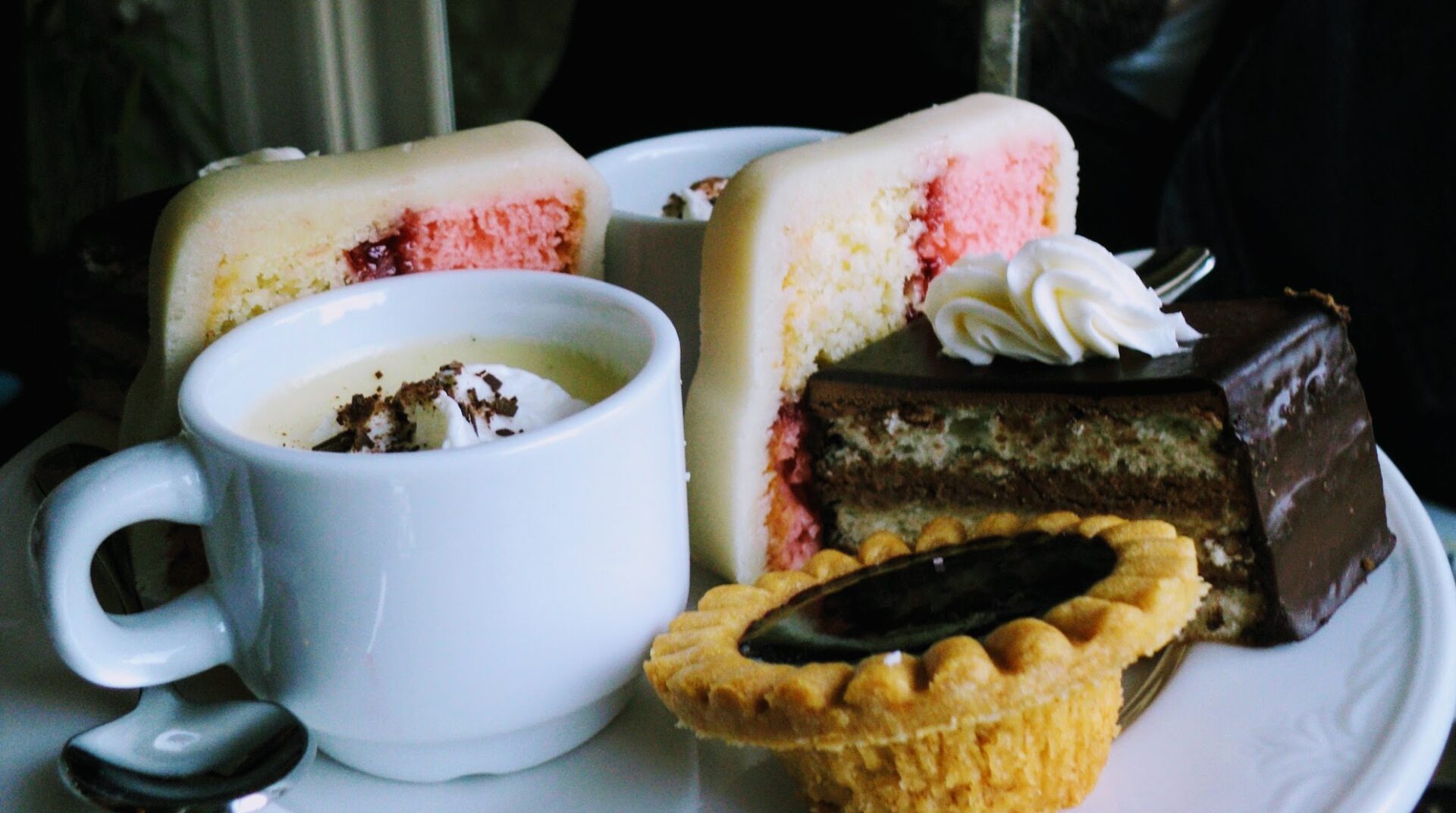
Today is your day to explore the delightful and charming town of Victoria, which is also the capital of British Columbia.
In the morning, walk around town and down the shopping area of Government Street and take in one of Victoria’s excellent museums. I recommend the Maritime Museum or the Royal BC Museum.
In the afternoon, you need to have afternoon tea! This is an institution for generations in Victoria. I recommend skipping the very tourist oriented (and overpriced) tea at the Empress Hotel and instead have tea at Butchart Gardens. In my opinion, this is the best afternoon tea in Victoria. This also gives you the chance to explore world famous Butchart Gardens, which is really beautiful all year.
To get out to Butchart Gardens it’s about a half hour drive from the Inner Harbor. You can take the city bus from downtown and it takes about 45 minutes if you don’t want to deal with parking.
In the evening, make sure to stroll by the British Columbia parliament buildings, which have really beautiful white lights at night all year round.
Day 5 – Victoria to Tofino (5 hours)
This morning you’ll get up and do some scenic driving on Vancouver Island to the town of Tofino, which faces the open Pacific Ocean. It’s a slow drive but absolutely beautiful and fully worth it to see the stunning surf of the Pacific Ocean crashing against the rocks or exploring the beaches at low tide.
There are plenty of forest walks, waterfalls and beaches to stop at along the way to stretch your legs. Once you pass the town of Parksville, you’ll begin driving across Vancouver Island, going over a pass in the middle. You’ll pass the town of Port Alberni at the head of a long fjord.
When you are almost to Tofino, you’ll be near the town of Ucluelet which is another option for a place to stay on the west coast of Vancouver Island a slightly shorter drive.
Related: Best things to do in Ucluelet and Tofino

Day 6 – Tofino to Whistler (7 hours – not including ferry wait)
Today you’ll enjoy breakfast in Tofino (or Ucluelet) and perhaps fit in another beach stroll before starting your journey to Whistler. First off, you’ll retrace your journey back as far as Nanaimo (about 3 hours).
In Nanaimo, you’ll board a different BC ferry that will take you to the Horseshoe Bay terminal on the north side of Vancouver. Once again, you’ll want to have a reservation and arrive 30-60 minutes early. If you have enough time to explore the city of Nanaimo, make sure to get a Nanaimo bar!
It’s another scenic ferry ride across to the mainland that lasts about an hour and forty minutes.
When you arrive in Horseshoe Bay, you’ll be driving the almost unbearably beautiful Sea to Sky Highway for 100 km (60 miles to Whistler). While the drive is only an hour and a half, there are so many wonderful places to stop along this highway it is likely to take you much longer! At a minimum make sure to stop at Porteau Cove and Shannon Falls.
Related: 17 fun stops on the Vancouver to Whistler drive

Day 7 – Exploring Whistler
Today you get to explore the beautiful town of Whistler! Whistler is world famous for it’s skiing (the Olympics were here after all), but there’s so much more to Whistler than just ski slopes.
I recommend riding the Peak 2 Peak Gondola, which you can ride year round. If it’s not a clear day, I would skip this since the view is what makes it really amazing. You’ll see mountains as far as you can see in every direction!
Whistler is also a wonderful place to take a hike or a walk, there are lots of places to explore close by. Alta Lake has kayak rentals if you want to explore the water in summer and you can snowshoe around it in winter.
Make sure to take in some of Whistler’s excellent food as well.

Day 8 – Whistler to Kamloops (4 hours)
Today you’ll start your drive to Kamloops, which is a delightful town in BC’s sunny interior of wineries and agriculture! Kamloops is a perfect halfway point to break up the drive to the Canadian Rockies.
Make sure to give yourself time to explore the town of Kamloops as well as stop and taste some delicious BC wine.
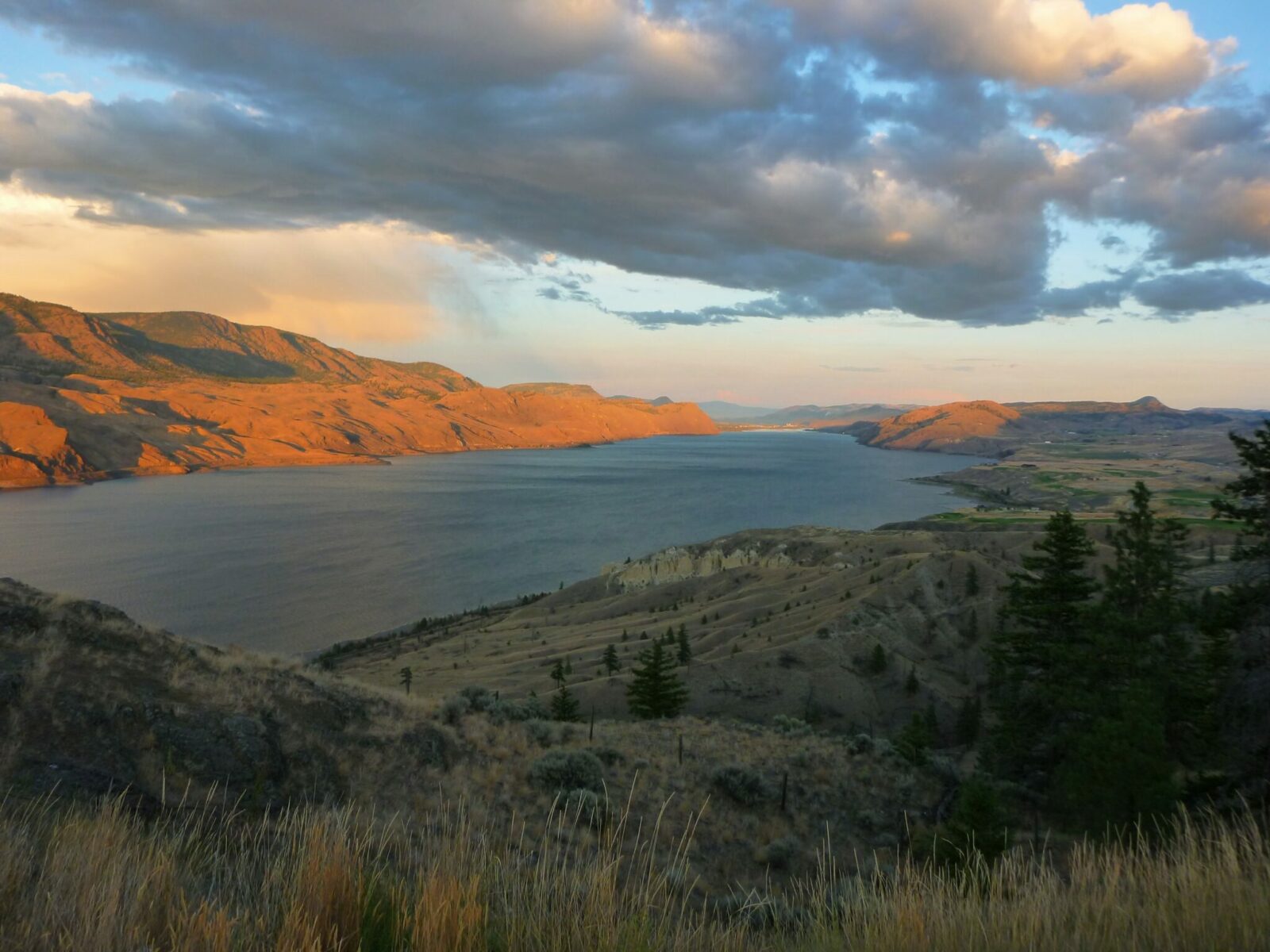
Day 9 – Kamloops to Radium Hot Springs (5.5 hours)
Today you are heading to the Canadian Rockies! This post is about a British Columbia itinerary, although the Canadian rockies stretch across British Columbia and Alberta. Many people go straight to Lake Louise, Banff and Jasper. These are beautiful and extremely crowded locations. If you want a little more room, less people and a more relaxed experience, stick with Kootenay National Park and Yoho National Park, which adjon Banff National Park and are every bit as stunning!
Related: Why you should visit Kootenay National Park
I recommend Radium Hot Springs as a base camp for your explorations in the Canadian Rockies, because it’s more affordable and less crowded than Banff and Lake Louise. There are a number of hotels in the town of Radium Hot Springs as well as vacation rentals and one of my favorite campgrounds ever, the Redstreak Campground. Redstreak Campground is operated by Parks Canada and is in Kootenay National Park. You can also walk from your campsite to Radium Hot Springs for your soak.
On the way from Kamloops to Radium, you’ll have plenty of opportunities to stop and stretch your legs. Make sure to stop at the Giant Cedars Trail in Mt Revelstoke National Park and Roger’s Pass.
When you arrive in Radium, make sure to go to Radium Hot Springs, which is my favorite of the Parks Canada operated hot springs. It is MUCH less crowded than the hot springs in Banff. Actually, I recommend doing this EVERY night while you’re in the Canadian Rockies
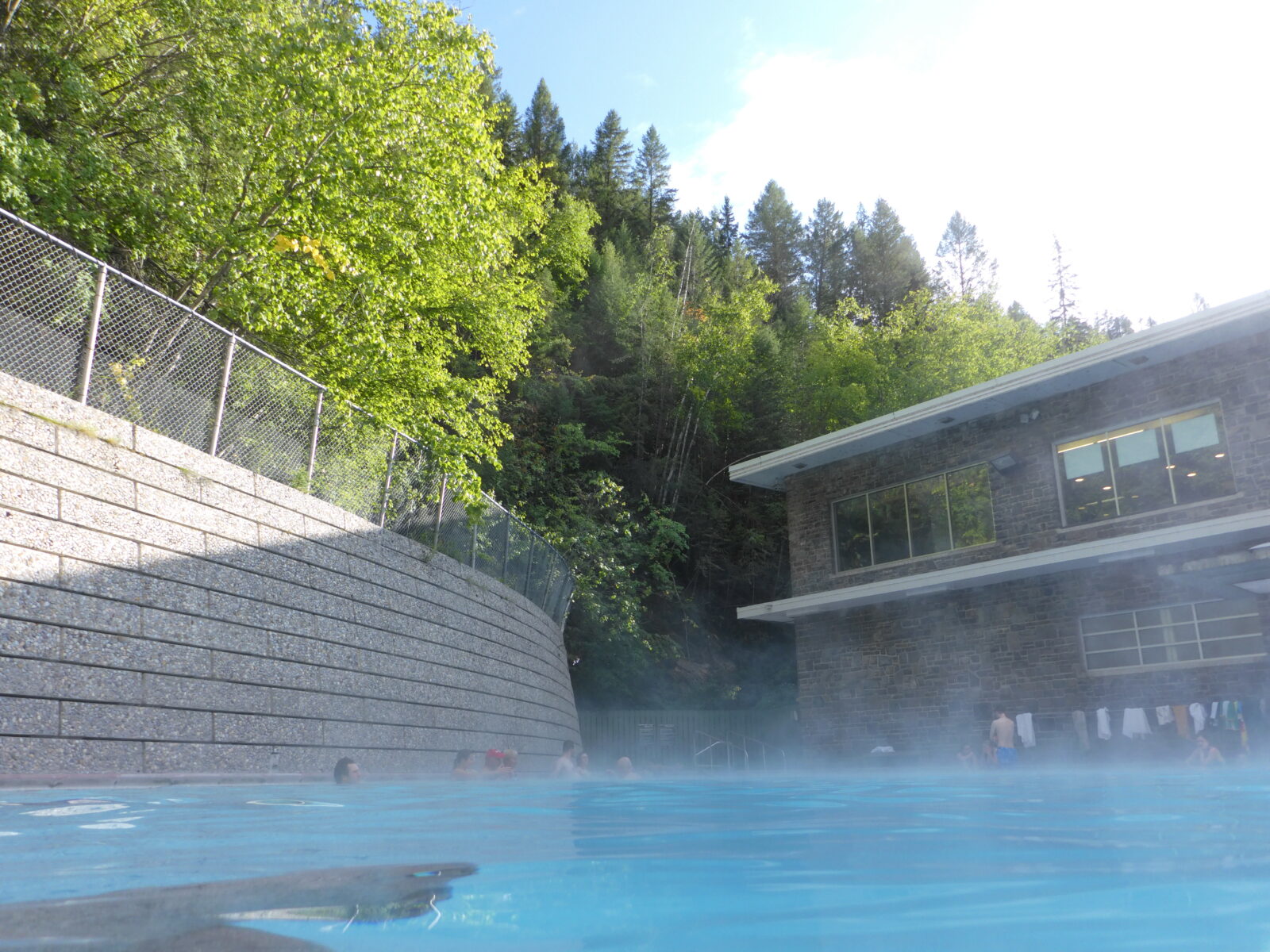
Day 10 – Exploring the Canadian Rockies
I suggest spending today exploring Kootenay National Park and Yoho National Park. In Kootenay, make sure to stop at Marble Canyon, which is a relatively short walk and absolutely stunning. The drive through the park is breathtaking, even in moody weather. There are plenty of hiking opportunties here as well.
In Yoho, don’t miss gorgeous and internet famous Emerald Lake, with it’s towering mountains, perfect blue-green water and charming photogenic lodge. You can walk around the lake or rent a canoe here if you want to spend some time.
Takakkaw Falls is another fantastic stop in Yoho, if you’re up for the adventurous drive to get there!
Don’t forget to go back to the hot springs tonight!

Day 11 – More exploring the Canadian Rockies
If you’re up for braving the crowds, this is a good day to head to Banff and Lake Louise. I recommend going straight to the shuttle area on the highway for parking and get there as early as possible to see Lake Louise. Get there as early as possible as even the shuttle sometimes includes a long wait. Don’t even think about trying to drive into the Lake if you’re not staying there.
Lake Louise has plenty of hiking trails and canoe rentals to spend your day in and you can also go further up the road (again on the shuttle) to Morraine Lake, which is possibly even more beautiful!

If you’re not tired of crowds, head over to Banff and explore this charming mountain town. There are plenty of shops and restaurants as well as walks and hikes to keep you busy in Banff.
Day 12 – Radium Hot Springs to Nelson (5.5 hours)
Today you’re leaving the Canadian Rockies behind you to make your way back to Vancouver. You’re going to spend three days getting there so you can have some fun and not just be in the car all day. It is possible to drive straight from Radium to Vancouver in one day, which takes about 10 hours (without stops) and backtracks the same roads you’ve already driven.
On this British Columbia itinerary, we’re seeing new things on different roads on the way back!
On your drive from Radium to Nelson, I recommend going the slightly slower way that includes taking a short and scenic ferry across Kootenay Lake and a soak in Ainsworth Hot Springs (which has a super cool human made cave).
Nelson is only a short distance beyond Ainsworth. If you get there early enough to explore this quirky mountain town, you’ll enjoy it’s many shops and restaurants along the river.

Day 13 – Nelson to Osoyoos (3 hours)
Today you could drive all the way back to Vancouver, but I recommend taking your time to explore the agricultural heartland of British Columbia and taste more incredible wine. You’ll be going through mountains and forests to get there, but Osoyoos itself is very dry.
Spend some time enjoying Osoyoos Lake and wine tasting when you arrive.
Day 14 – Osoyoos to Vancouver (5 hours)
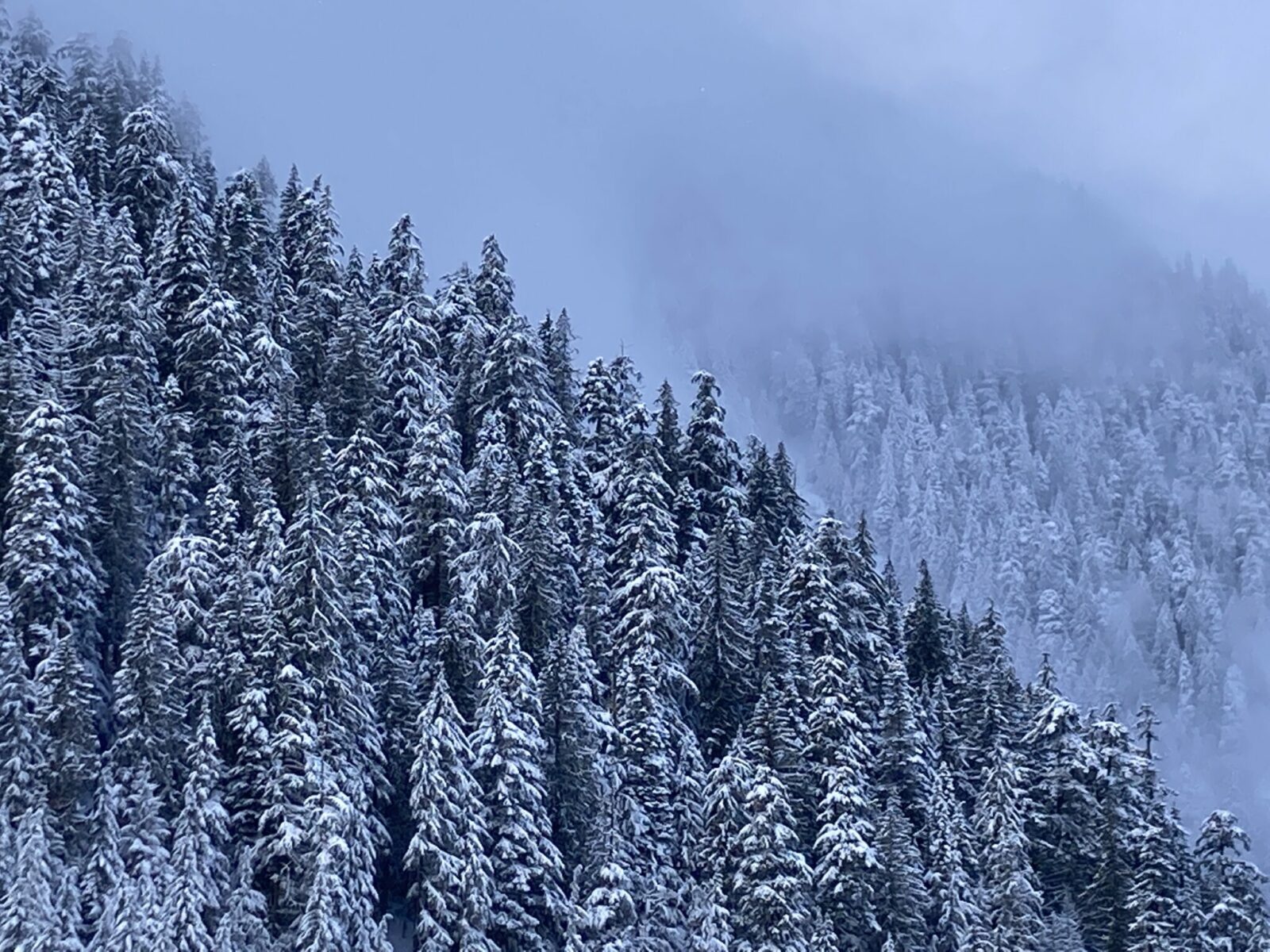
Today you’ll complete your British Columbia road trip by returning to Vancouver! Along the way you’ll head up and over the Cascade Mountains to the Salish Sea once again.
EC Manning Provincial Park is a wonderful place for hiking or picnicking. The mountains here are incredible and you’ll continue to see amazing views as you drive from Hope to Chilliwack over a high mountain pass.
Once you get to Chilliwack, you’ll be in the outskirts of Vancouver. If you are flying out, it makes sense to stay near the airport tonight so you’re ready to fly home.
Related: Complete guide to Winter in Manning Park, BC
If you have more time for your British Columbia Itinerary
If you have more time for your trip in British Columbia (lucky you!) here are a few ideas for how to spend it:
- Explore more of Vancouver Island, including the remote north end of the island
- Relax on the quiet and stunningly beautiful Sunshine Coast
- Go further up north along the Cariboo Chilcotin Highway
- Spend more time in BC wine country
- Visit even more hot springs!
- Spend more time in the Canadian Rockies
- Spend more time in Vancouver
Related: Vancouver to Banff road trip itinerary
What to pack for your trip to British Columbia
The weather throughout British Columbia varies quite a bit, with the Vancouver and Victoria area being rainier with more mild temperatures year round. The BC interior is hotter in summer, colder in winter and sunnier and drier year round.
For both of these itineraries, I recommend being ready for rain or sun any day all year! The main difference for winter is to bring more warm layers on colder days. The most important thing is to have an excellent rain jacket and waterproof footwear any time of year in British Columbia.
If you’re doing your British Columbia itinerary in the winter, you might want to consider bringing snow boots as well as a puffy coat if you are leaving the Vancouver and Vancouver Island area.
For summer travelers, it can be rainy and chilly in the summer, but it can also get quite hot. Make sure to bring some light layers for hot days (or warm indoor spaces).
Some specific things I recommend packing for your trip to British Columbia include:
Rainjacket
It’s probably not a surprise that the most important thing to consider in what to pack for British Columbia is an excellent rainjacket. Make sure it’s actually waterproof and not a light windbreaker (although if you’re visiting late July through early September that would likely be adequate if you’re staying in Vancouver).
- Make sure it’s waterproof (I like Gore Tex material but it’s not the only option)
- Make sure it’s big enough to fit over other layers (especially in winter when you’ll need a warm layer underneath it). I always have a rainjacket one size bigger than other tops I own.
- Make sure it’s long enough – this is a matter of personal preference but I prefer one that is long enough to not ride up all the time, especially with layers on
- Get a lightweight one – Because rain happens at a wide variety of temperatures in British Columbia, I recommend getting a rain jacket without an insulating layer and getting a separate layer of warmth (like a fleece or puffy) . This will allow you to wear them separately. A light raincoat is also easy to bring in your bag for that sudden rainstorm
Waterproof boots or shoes
This is particularly important in fall through spring. If you’re visiting late July through early September and staying in cities without doing any hiking, then you might be fine without waterproof footwear.
Lots of people wear rubber boots even on city streets when it’s raining, in particular the super popular Hunter rubber boots, which come in a variety of colors. I personally prefer Xtra Tuf Boots because they are also super comfortable for muddy hikes!
If you’re more interested in hiking boots or hiking shoes, that’s another great option for the footwear you pack for British Columbia and it’s totally ok to wear hiking shoes and boots in the city too. I personally recommend Merrells which I wear for hiking. I prefer hiking shoes to boots, but if you prefer the extra ankle support of hiking boots go with that.
In addition to shoes, wool socks will help keep your feet warm and if they get wet it’s not totally miserable! Bring lots of extra socks!
Other Essentials
A few other things I consider necessary (in addition to toiletries and person items) include
- Waterbottle – like much of the Pacific Northwest, people carry waterbottles and you can fill them up all over the place
- Umbrella – this can be really handy for summer days or surprise rain showers
- Resuable shopping bag – you can get this when you arrive if you don’t have one or don’t want to travel with it. Effective January 1, 2022 there is a plastic bag ban so you’ll want to have something to carry purchases with
- Layers – you’ll want to be comfortable in a variety of temperatures, so bring clothes you can wear separately or together on warm or cool days.










